Greece › Athens › Archaeological Sites › Temple of Olympian Zeus
By Santorini Dave
See Also
- Best Hotels in Athens
- Where to Stay in Athens
- Best Restaurants in Athens
- Best Things to Do in Athens
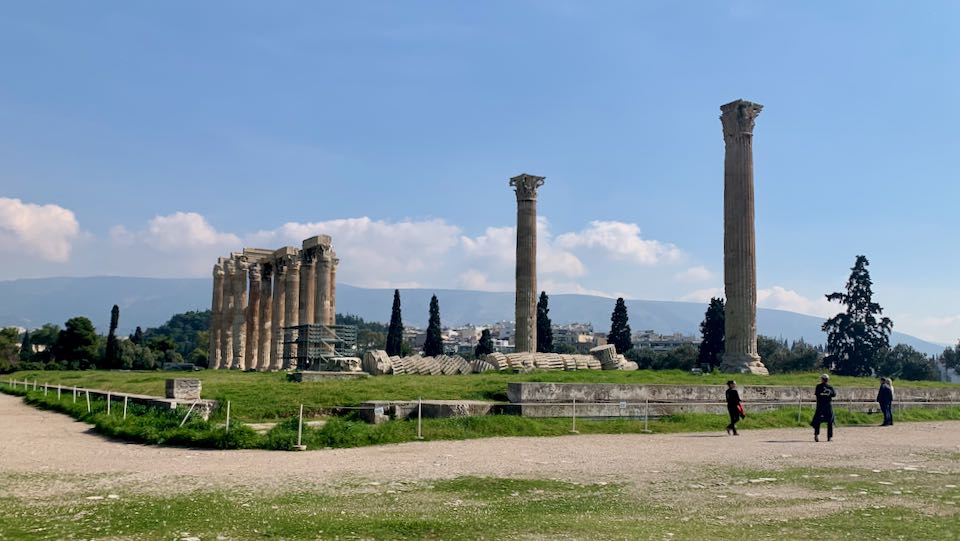
The Temple of Olympian Zeus in Athens is located in the Olympieion archaeological site just south of the National Garden.
Tours and Tickets:
• Athens Pass Combo Ticket (7 archaeological sites + Acropolis Museum. No tour.)
• Athens Mythology Highlights Tour (Guided tour of Acropolis, Ancient Agora, and Temple of Olympian Zeus)Temple of Olympian Zeus Hours and Information
- Hours: Open daily. Summer (April to October) 8am – 8pm; last entrance to the site at 7:40pm. Winter (November to March) 8am – 5pm; last entrance to the site at 4:40pm. Open daily. Summer 8am – 8pm; last entrance to the site at 7:40pm. Hours are reduced gradually in the early fall to winter (check website for details). Closed 1 January, 25 March, 1 May, Orthodox Easter Sunday, 25 & 26 December.
- Website: odysseus.culture.gr
- Location: Athens 105 57
- Telephone: +30 210 922 6330
- Admission Fee: Summer (April to October) entrance fee: 8€. Winter (November to March) entrance fee: 4€. Reduced admission 4€. For 30€, you can purchase a combo ticket for this and 6 additional sites: Acropolis, Ancient Agora of Athens, Hadrian’s Library, Temple of Olympian Zeus, Kerameikos and Aristotle’s Lyceum. Combo ticket valid for 5 days and offered all year round. Purchase on site or in advance online.
- Free Entry: 6 March (in memory of Melina Mercouri), 18 April (International Monuments Day), 18 May (International Museums Day), the last weekend of September annually (European Heritage Days), 28 October, every first Sunday from November 1st to March 31st.
- Parking: Street parking, nearby pay lots.
- Nearest Metro: Acropoli
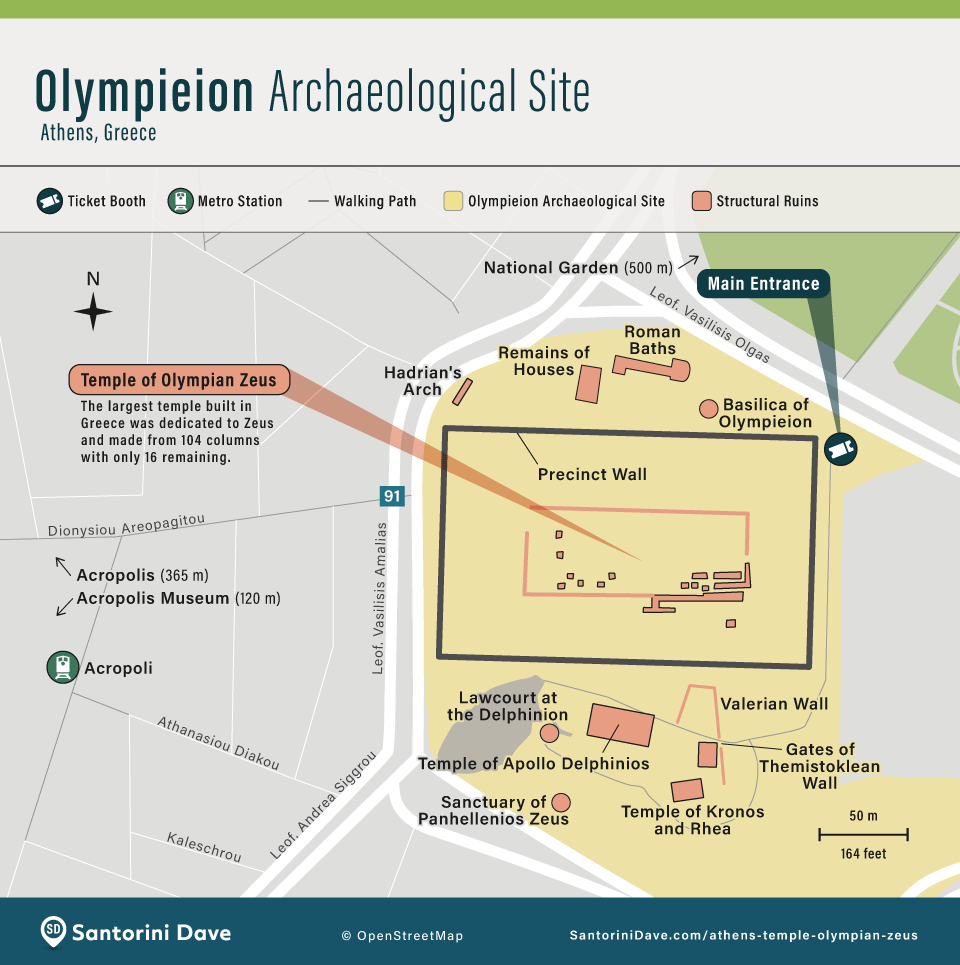
Temple of Olympian Zeus in Athens
- Located in the city center just south of the National Garden, about a 350-meter walk from the Acropolis museum and a 750-meter walk from Syntagma Square.
- The largest feature (and namesake) of the Olympieion archaeological site, this towering temple was dedicated to Zeus, foremost of the Olympian Gods.
- Construction began in the 6th century BC by Peisistratos, ruler of Athens between 561 and 527 BC. Construction was abandoned due to lack of funds or because the ruler was forced into exile during his reign. Several leaders attempted to finish construction, but the Roman emperor Hadrian was able to complete the temple in 131 AD, about 700 years later. He also built a colossal gold and ivory statue of Zeus, the largest cult statue of the ancient world.
- The temple was the largest ever to be built in Greece, and featured 104 enormous columns. Of those, only 16 remain. The columns measure 17 meters high with a base diameter of 1.7 meters. There is one fallen column among them, having been blown down by gale force winds in 1852. – Nothing remains of the inner chamber of the temple or of the colossal statue of Zeus that it once housed.
- After the fall of the Roman Empire, the temple was picked apart for building materials to supply other building projects in the city.
- On April 27, 1759, during the Ottoman Empire, Athens governor Mustapha Agha Tzistarakis destroyed one of the columns in order to re-use the marble to make plaster for construction of the Tzistarakis Mosque. This mosque is located on Monastiraki Square.
- The Olympieion archaeological site also includes ruins of Roman baths, Classical residences, a 5th century basilica, and a portion of the city’s fortification wall. Hadrian’s Arch is located just outside the site’s boundary.
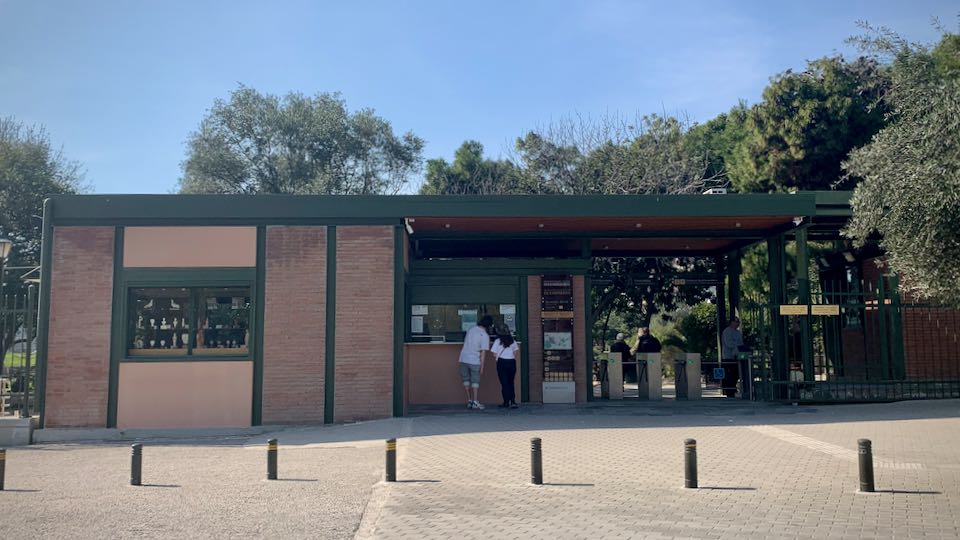
The Temple of Olympian Zeus is located in the Olympieion archaeological site in central Athens. The entrance to the site is a short walk from the Acropolis and Acropoli metro station, on Vasilssis Olgas Avenue.
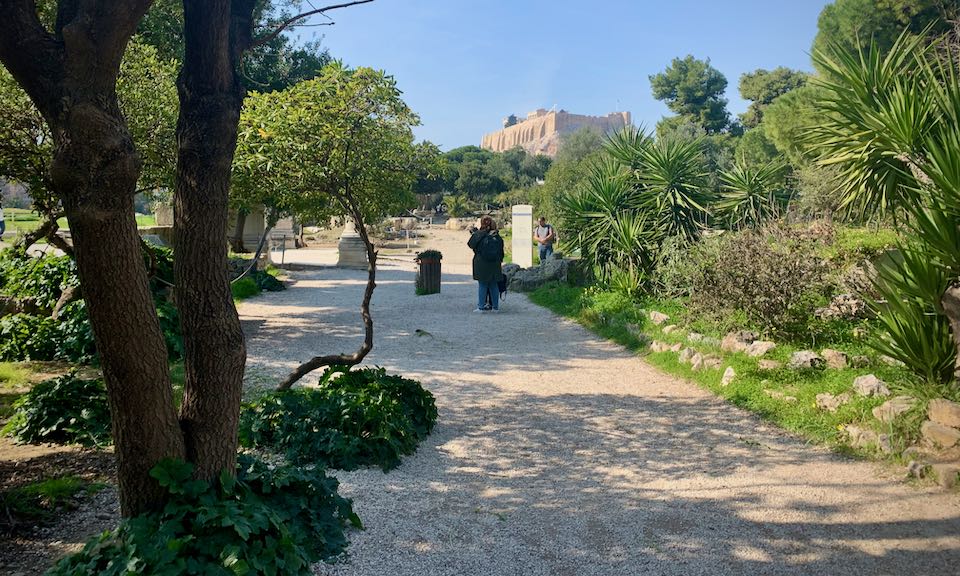
The level, crushed-gravel path that skirts the perimeter of the site is easily accessible and has good views of the Acropolis.
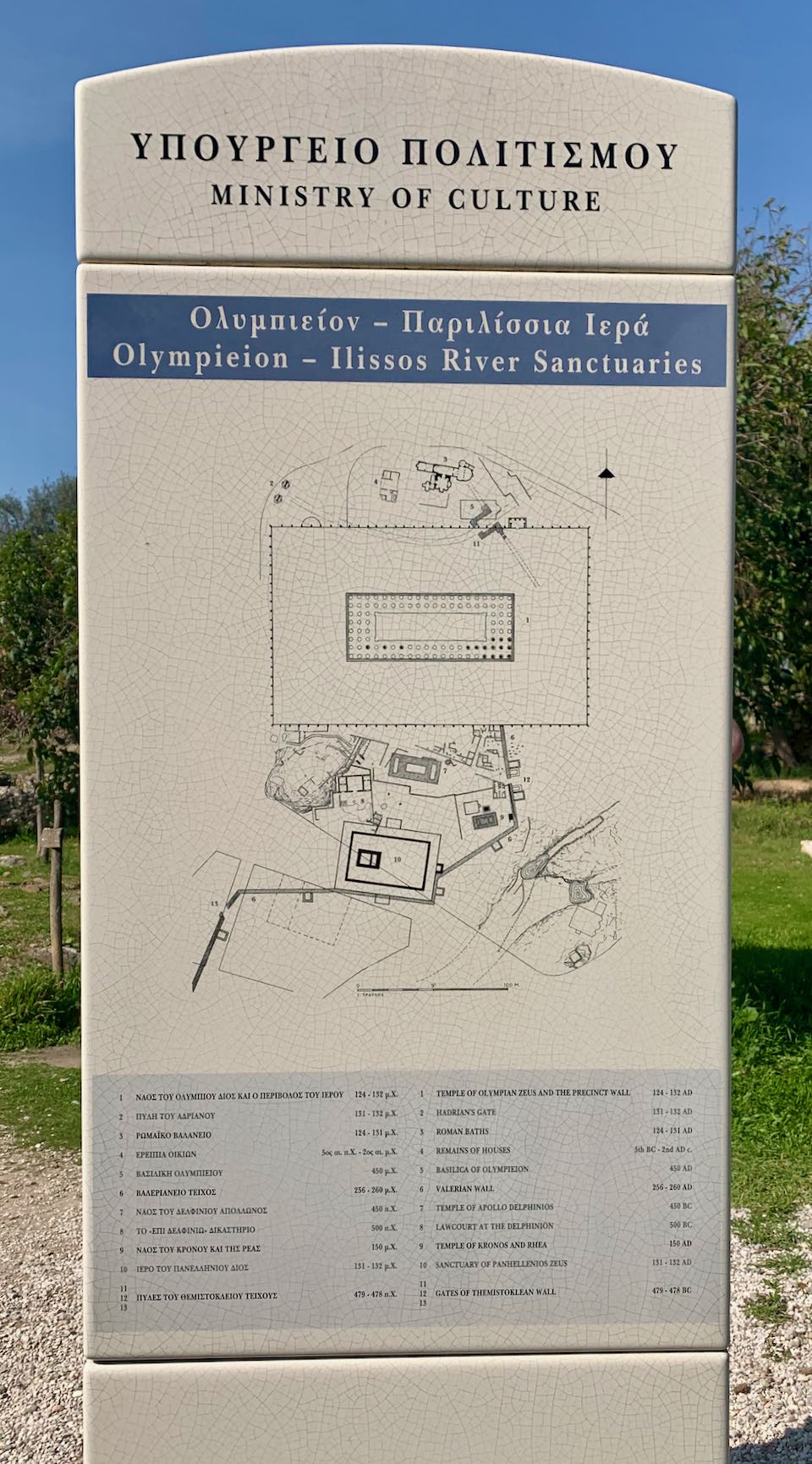
Map of the site.
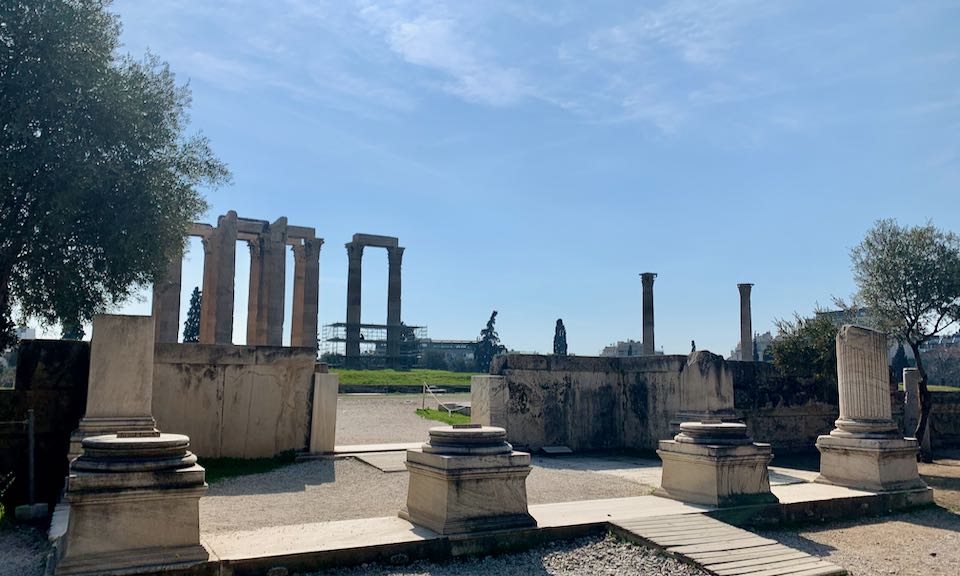
Temple entrance.
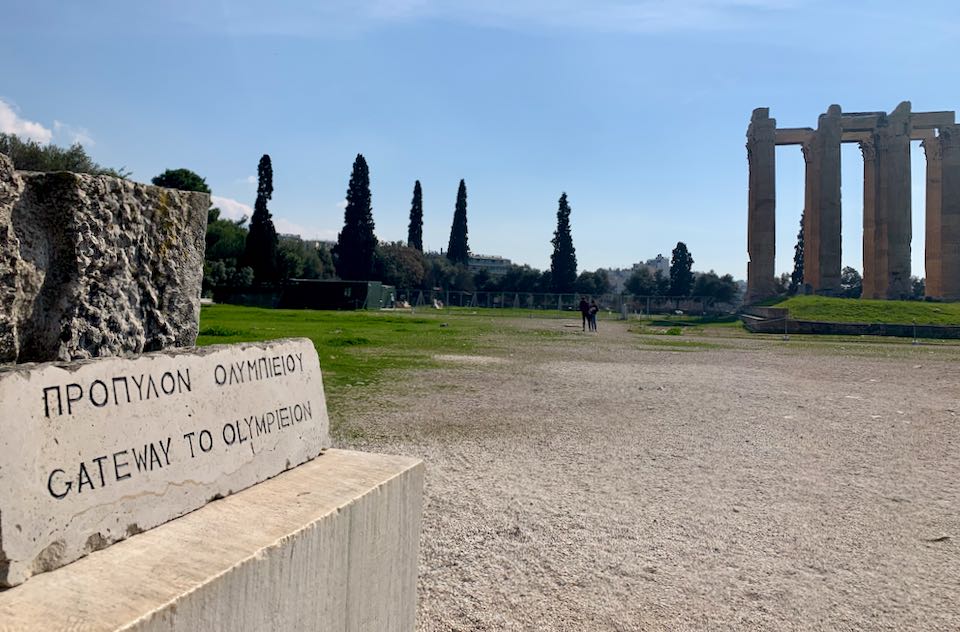
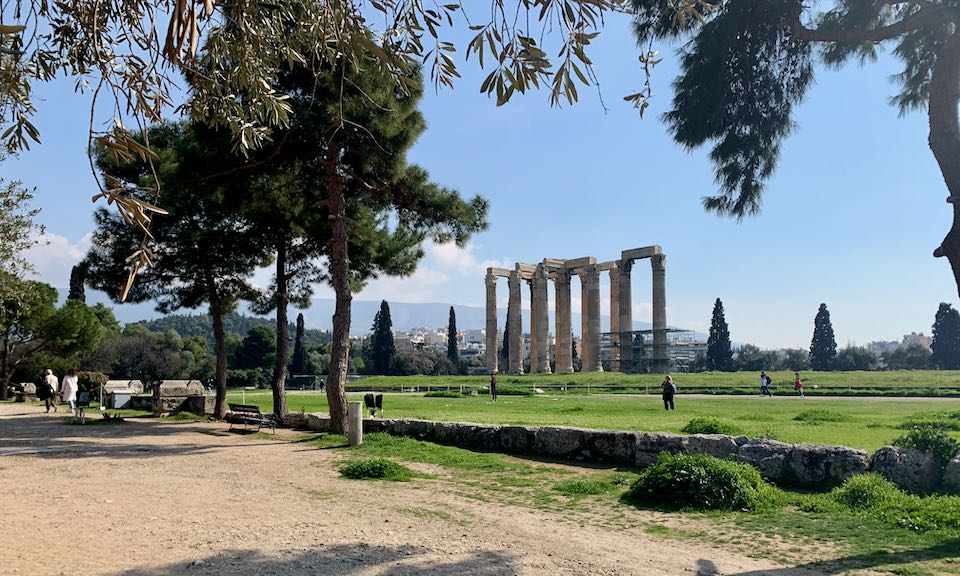
The ancient temple was the largest ever to be built in Greece.
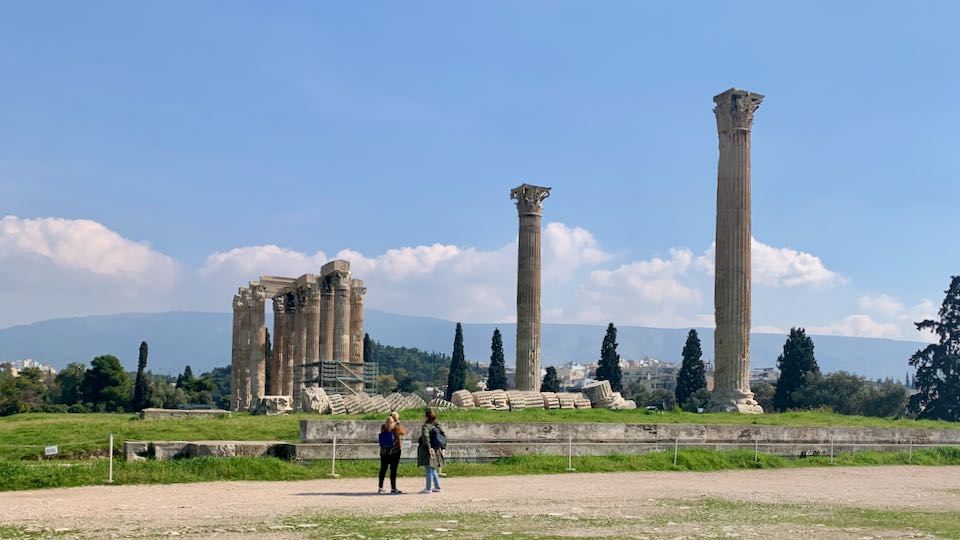
When it was intact, the temple featured 104 enormous columns. Only 16 remain today, including one that was toppled in 1852 by gale force winds.
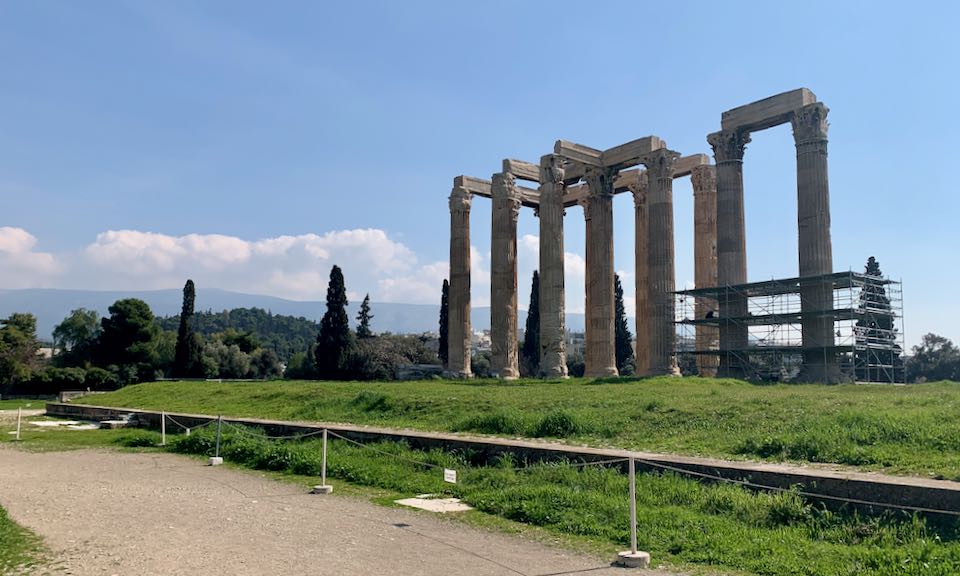
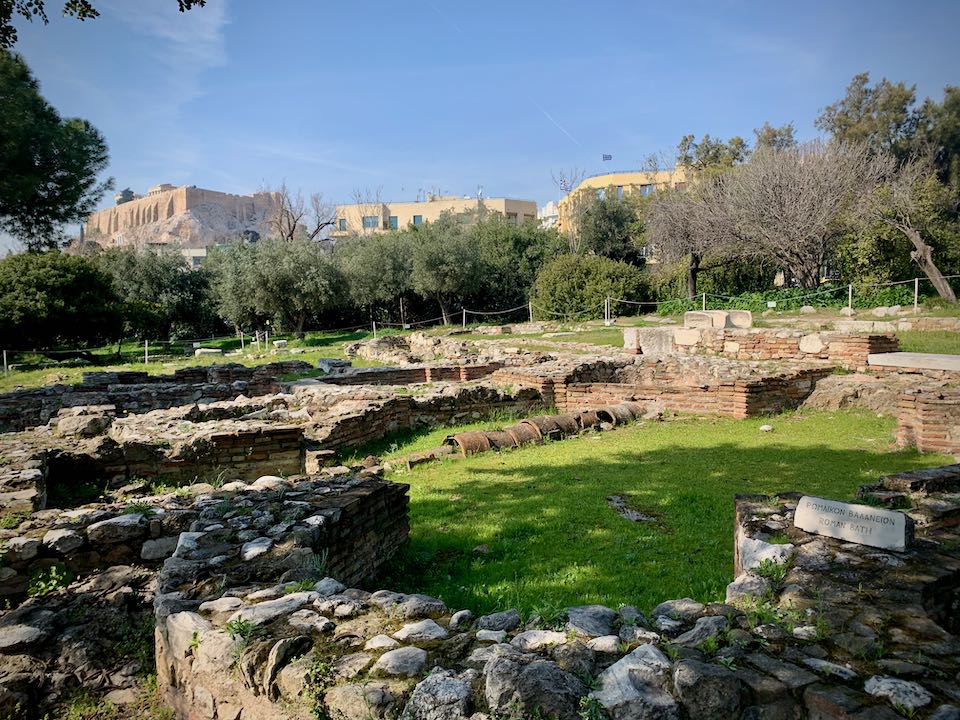
Also within the Olympieion Site are the remains of Roman Bath…
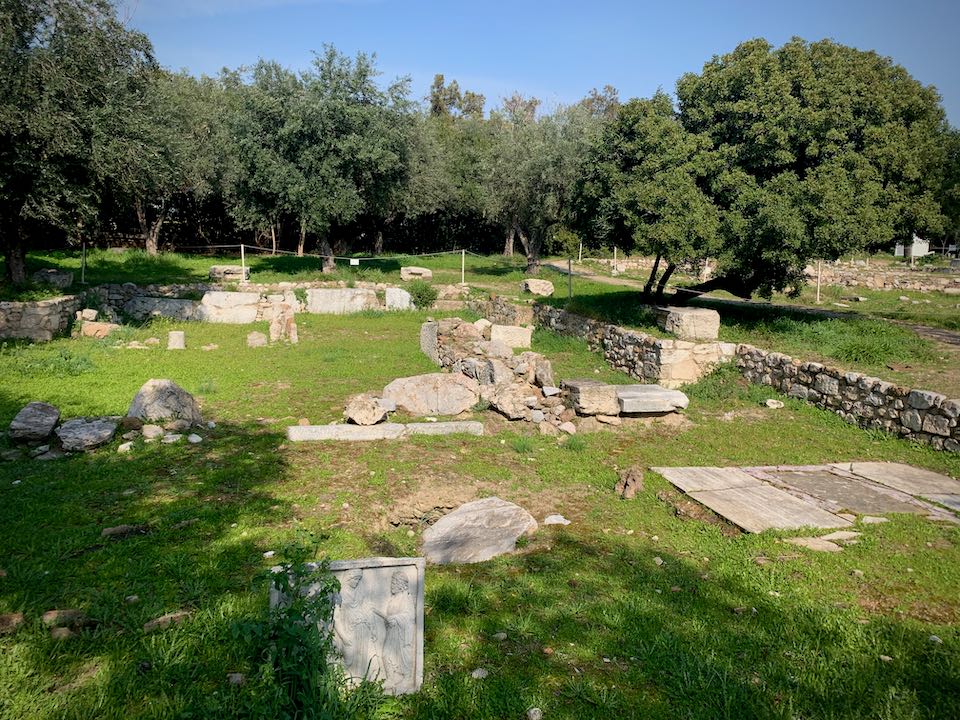
…the stone foundations of Classical Era houses…
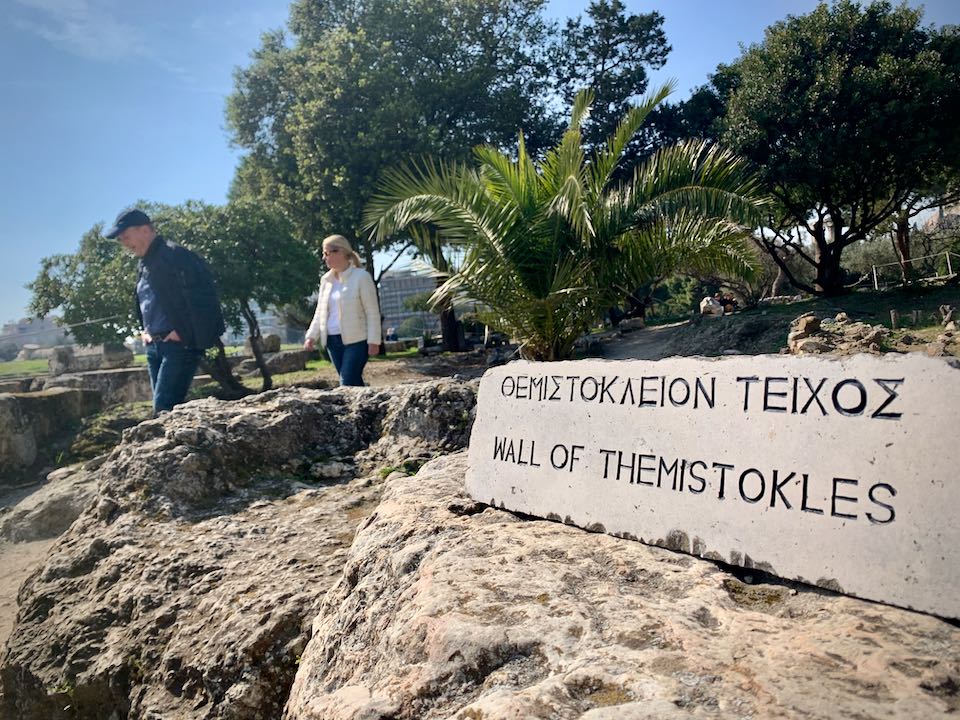
…and ancient city walls.
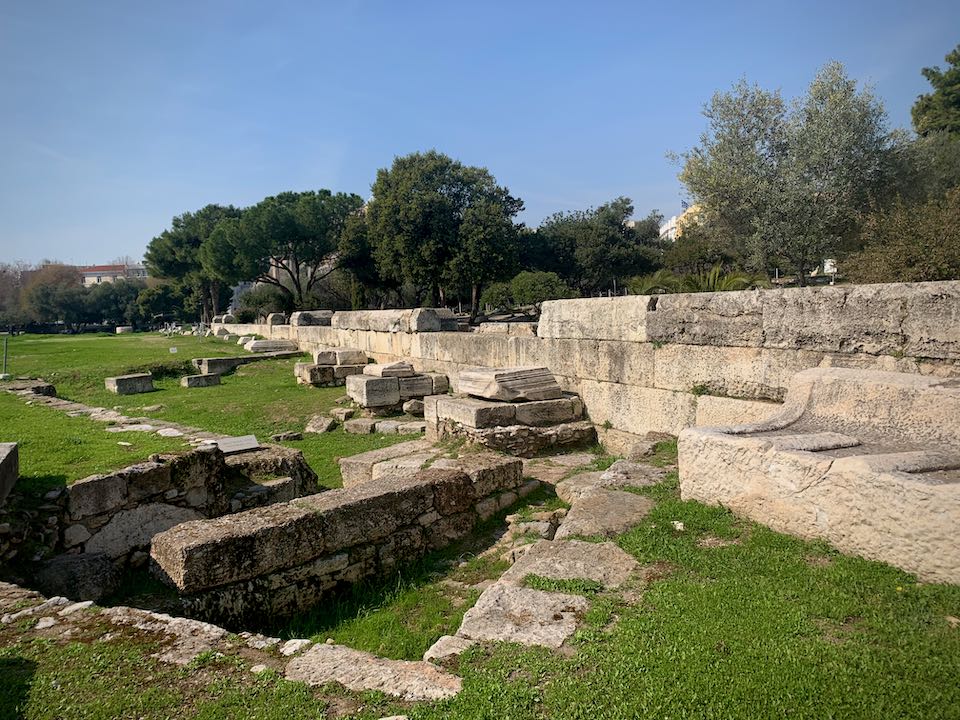
Read More
About Santorini Dave